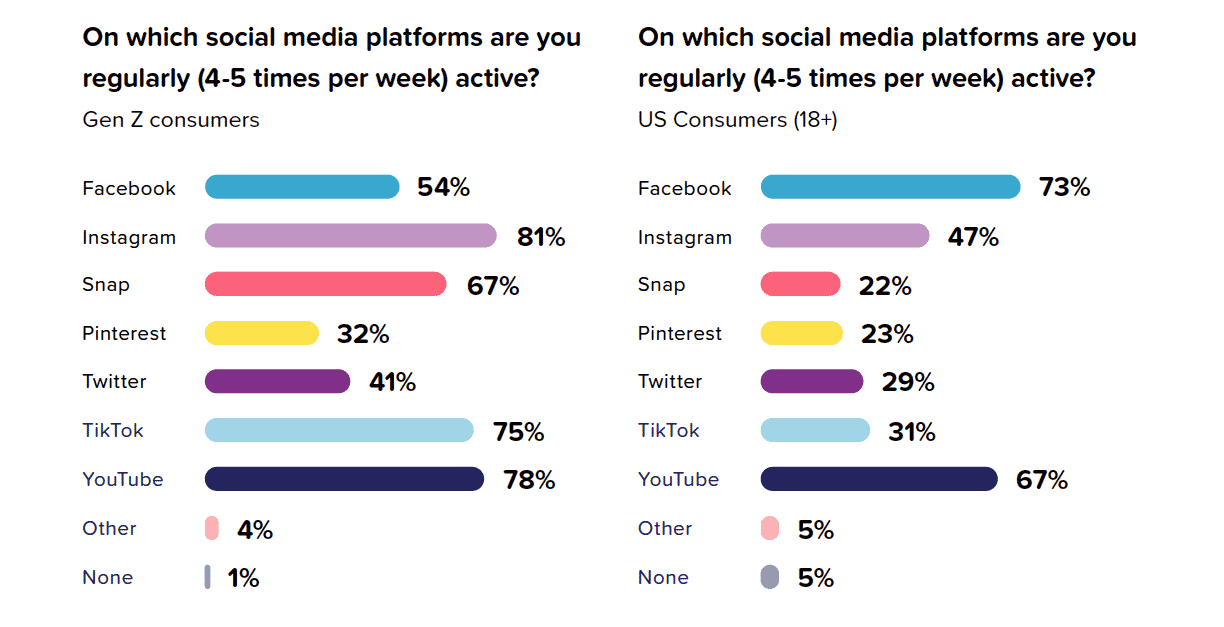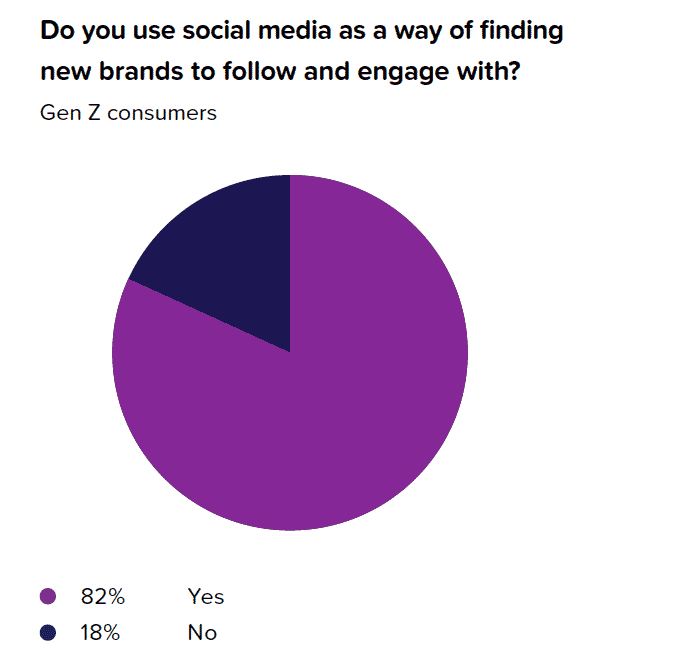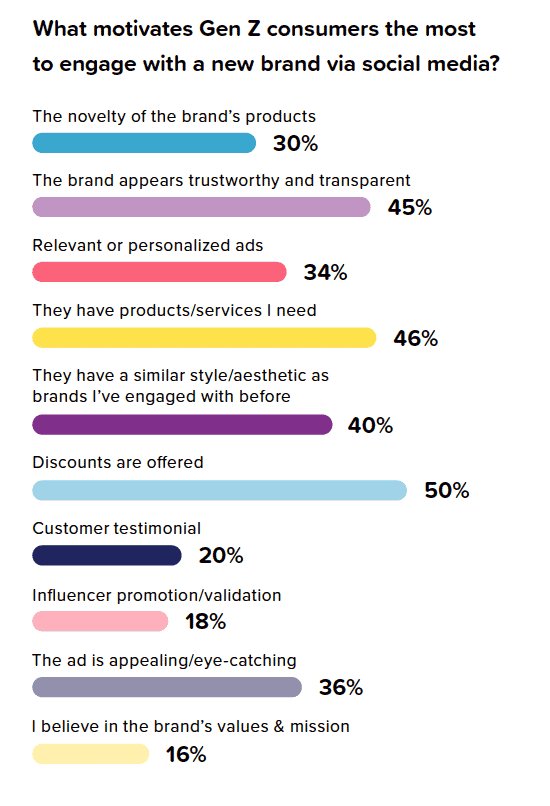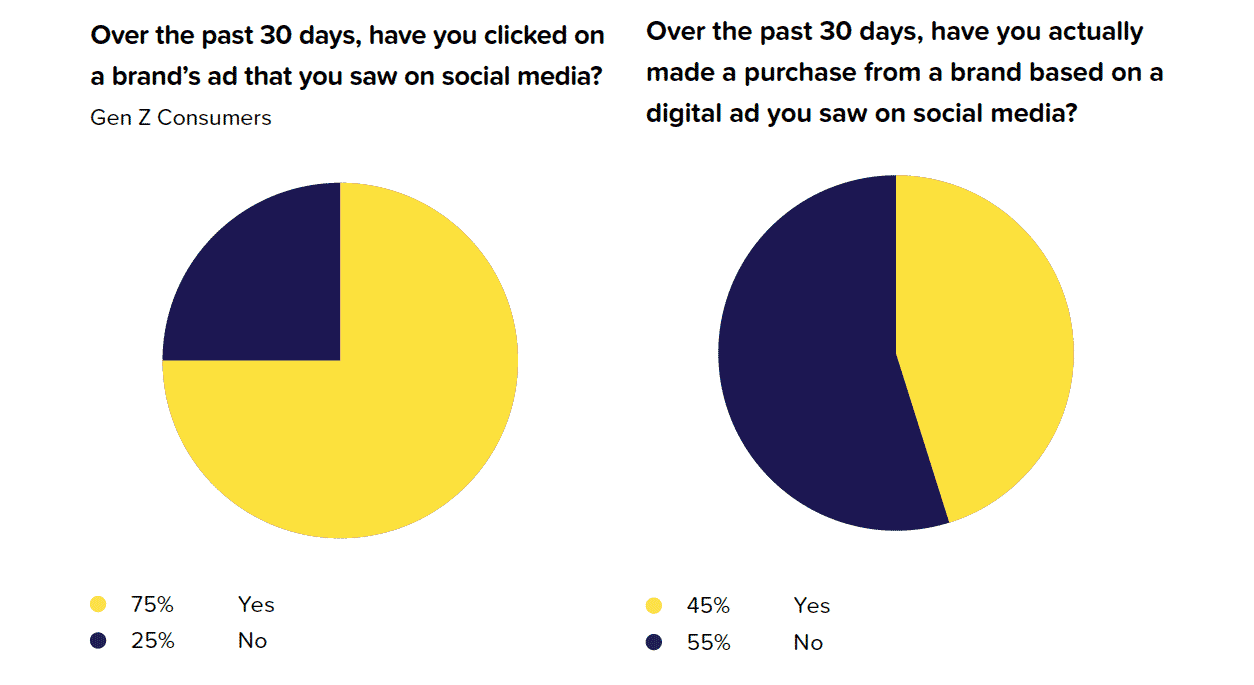New research from marketing-focused social advertising automation platform Smartly.io examines the role social media plays in how consumers connect and engage with brands and how the Gen Z mindset differs from the generations before it when it comes to interacting with social ads. The data collected provides brands with insight into Gen Z’s social media usage and engagement, which is critical as they define and reach target audiences across platforms.
Highlights from the survey data include:
- Gen Z favors variety and is active across more social platforms than other age demographics
- Gen Z adults are regularly active on Instagram, TikTok, YouTube and Snapchat, among others (Facebook and YouTube rank high across general consumers)
- 82 percent of Gen Z consumers use social media as a way of finding new brands, compared to 57 percent of general consumers
- 87 percent of Gen Z is open to seeing advertising from brands they like or have purchased from before as well as from new brands
- 40 percent of Gen Z consumers prefer Stories, Reels or TikTok videos when seeing ads from brands on social media
Across the board, data showed that variety, video/motion-specific content and brand authenticity are all very important to this specific audience. When creating a social media strategy, brands that take these points into consideration and create a connected, consistent and authentic approach across each platform are likely to make the most impact with Gen Z and garner more engagement on digital ads.
“For brands wanting to make a personalized impact on consumers, creative is a must,” said Lyle Underkoffler, CMO of Smartly.io, in a news release. “Spend on social media advertising is up, even as privacy regulations continue to shift the course of the advertising market. This data shows that brands investing more time and understanding in creative can help develop new strategies for producing personalized and relatable experiences for consumers. For many—specifically Gen Z—this investment creates a genuine connection.”
Consumers’ digital journeys are becoming more and more complex. Building an authentic, omnipresent multiplatform social strategy that speaks to consumers at all touchpoints along their path, from introduction to purchase, will be successful at developing a strong relationship with possible lifelong consumers.







